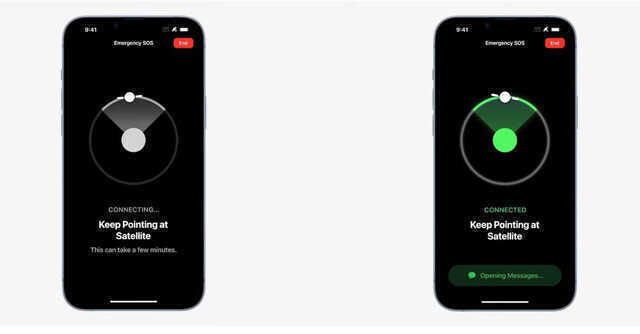
How satellite connectivity works in Apple’s new iPhone 14


On September 7, Apple unveiled its latest generation iPhones, which includes the new iPhone 14 series. Among other features, one key new addition is the presence of satellite connectivity — which would allow users of the iPhone 14 series to connect to a satellite network and send their location or emergency messages from remote locations.
The feature is designed to work for users in areas that lack terrestrial mobile network connectivity, and could therefore be crucial in remote locations where satellite networks are already in use — just not in mainstream smartphones. For instance, deep sea travel and remote trekking expeditions could benefit from the use of satellite communication for emergency purposes.
What powers Apple’s satellite connectivity

The satellite connectivity is a result of Apple’s partnership with US-based satellite operator, Globalstar. The latter, according to a Reuters report, will benefit from a $450 million ‘advanced manufacturing fund’ that Apple has allocated to build a satellite network that would cater to its iPhones — although it remains unclear right now as to which other operators might Apple also be partnering with in this space.
The partnership would therefore see iPhone 14 users get access to Globalstar’s constellation of low-Earth orbit (LEO) satellites, which are specifically built for satellite connectivity to phones.
How will the feature work

To use satellite connectivity, users are required to open an emergency satellite connectivity app on their iPhones, which is designed specifically to connect to a satellite network. Once this app is opened, users will be asked to point their phone to the sky, to search for a satellite network.
During the keynote on September 7, Apple said that iPhones will take at least 15 seconds to connect to a satellite network under a clear sky — or “a few minutes” if there is cloud, or trees above you.
The app’s satellite silhouette will turn green when a user points in the right direction, affirming connectivity. Users will then be able to select what message to send — which they can do by using the quick select menu that asks what emergency the user is facing.

Apple further detailed that its satellite communication service will apply a compression standard to reduce the size of every message and send messages faster.
Once a message is sent, it is relayed to a ground station operated by Globalstar. The company added that for emergency services that do not have a text message facility, the ground station will connect with an Apple-backed contact centre, which will convert a user’s emergency satellite message to a voice call, to seek help.
On the user’s end, the interface will include just a few taps of a preset menu. In non-emergency cases, users will also be able to relay their location via satellite connectivity, when on a hiking trail.

